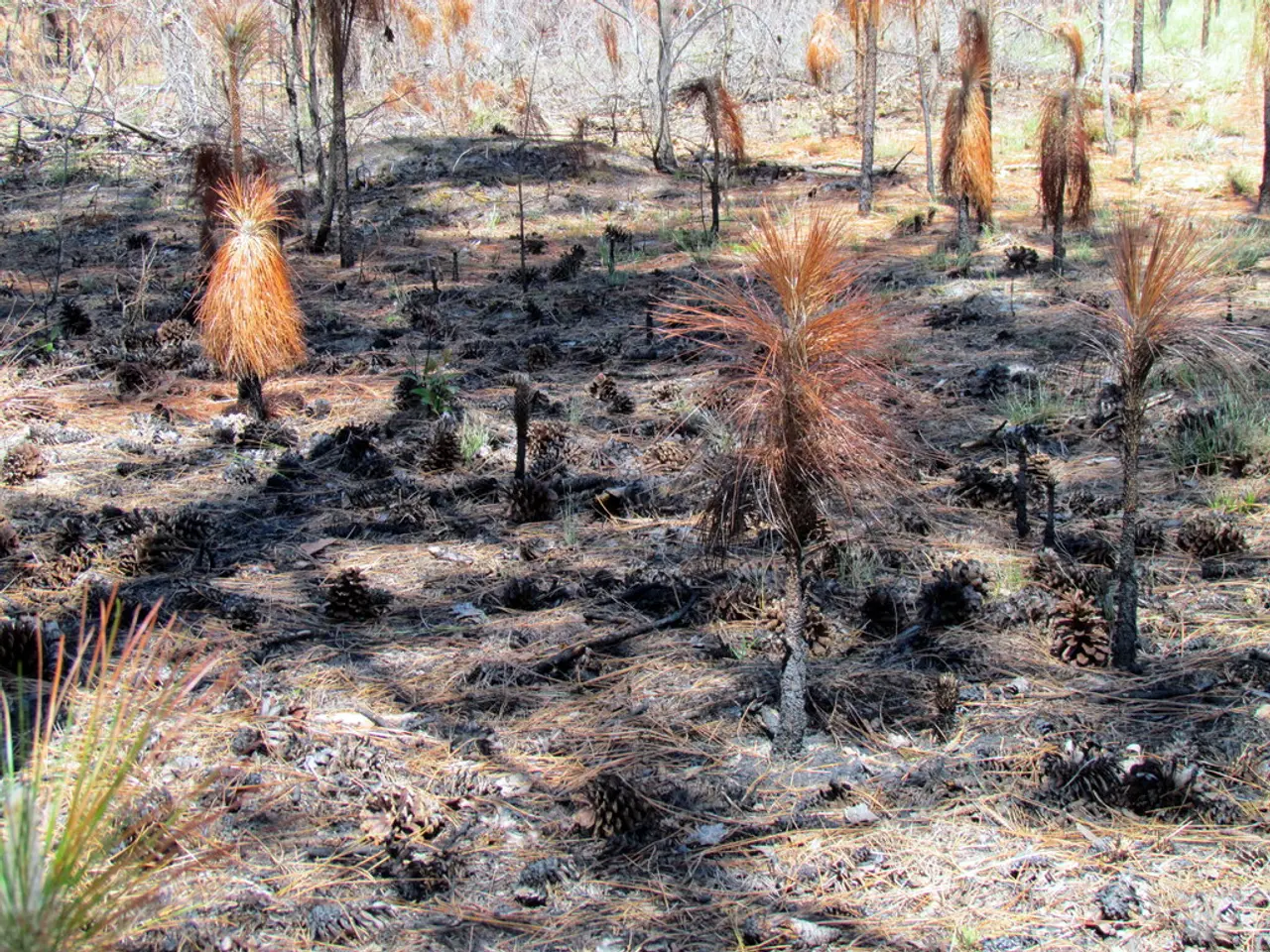Sustained Agricultural Rotations Incorporating Cover Crops for Eco-friendly Cultivation Practices
In the world of modern farming, cover crops and crop rotation strategies are playing increasingly important roles in enhancing soil health, pest management, and productivity. These practices, when carefully implemented, can provide numerous benefits to agricultural production, particularly after staple crops like wheat, early soybeans, late soybeans, and corn.
## Key Benefits of Cover Crops in Rotation
Cover crops offer a multitude of advantages, including improving soil health, managing nutrients, suppressing pests and weeds, enhancing yield stability, and providing economic incentives for farmers.
Soil health improvement is one of the key benefits of cover crops. They increase soil organic matter, improve structure, and promote microbial activity, leading to better water infiltration and reduced erosion. Nutrient management is another significant advantage, with leguminous cover crops fixing atmospheric nitrogen, replenishing soil nitrogen levels, and reducing the need for synthetic fertilizers.
Pest and weed suppression is another crucial role of cover crops. Diverse cover crops disrupt pest and disease cycles, suppress weeds, and reduce reliance on herbicides. Yield stability and risk reduction are also important benefits, as cover crops can mitigate yield penalties during adverse weather by improving soil aggregation and water retention. Economic incentives are another factor, with farmers potentially receiving financial incentives for adopting cover crops, further improving profitability.
## Specific Cover Crop Choices and Attributes
The specific attributes and roles of cover crops vary depending on the crop selected, but all support soil health, pest management, and productivity.
### After Wheat
Legumes, such as clover and vetch, are suitable for planting after wheat. These cover crops fix nitrogen for subsequent crops, improving soil structure. Grasses, such as cereal rye, oats, and barley, are also suitable for livestock grazing and offer excellent erosion control, weed suppression, and rapid growth.
### After Early Soybeans
Cool-season grasses like cereal rye and wheat thrive in cooler fall conditions and have deep rooting systems. They prevent soil compaction, scavenge residual nitrogen, and offer weed suppression over winter. Legumes like crimson clover and hairy vetch have nitrogen-fixing capabilities and early spring growth, preparing the soil with nitrogen for spring planting, especially beneficial if followed by nitrogen-demanding crops.
### After Late Soybeans
Short-season cover crops like oats and barley have fast establishment and growth before winter, providing quick ground cover, minimising soil erosion, and adding organic matter. Brassicas, such as radish, mustard, and turnips, have deep taproots and biofumigation properties, breaking up compaction, suppressing nematodes and soil-borne diseases, and reducing compaction.
### After Corn
Grasses like annual ryegrass, sorghum-sudangrass, and teff have deep rooting systems and high biomass production, improving soil structure, preventing erosion, and scavenging excess nutrients. Legumes like cowpeas and sunn hemp have nitrogen-fixing capabilities and rapid growth in warm conditions, replenishing soil nitrogen and reducing fertilizer needs for subsequent crops.
## Living Mulch and Specialty Cover Crops
Living mulch, such as Durana white clover and crimson clover, provides ongoing weed suppression, nitrogen fixation, and soil protection, particularly in row crops like cotton or soybean. Annual options offer flexibility and rapid establishment, while perennials like white clover provide persistent cover but may require more management.
In conclusion, cover crop selection should be tailored to the primary crop rotation, local climate, and specific field needs to maximise soil health and productivity benefits. Cover crops offer a myriad of benefits, including erosion control, nutrient leaching reduction, increased water infiltration, improved soil biodiversity, weed control, disease suppression, increased carbon sequestration, maximum nutrient recycling, improved air, soil, and water quality, and wildlife enhancement.
Cover crops selected after wheat, like clover and vetch, enhance soil structure with nitrogen fixation, while grasses such as cereal rye, oats, and barley cater to livestock grazing and offer excellent erosion control. In cooler conditions after early soybeans, cool-season grasses like cereal rye and wheat and legumes like crimson clover and hairy vetch promote nitrogen replenishment and weed suppression. After late soybeans, short-season cover crops such as oats and barley minimize soil erosion, and brassicas like radish, mustard, and turnips break up compaction and suppress soil-borne diseases. In rotation with corn, grasses like annual ryegrass and sorghum-sudangrass improve soil structure, while legumes like cowpeas and sunn hemp replenish soil nitrogen. Living mulch, such as Durana white clover and crimson clover, offers ongoing benefits like weed suppression, nitrogen fixation, and soil protection across different row crops, with annual and perennial options available for varying field needs.




